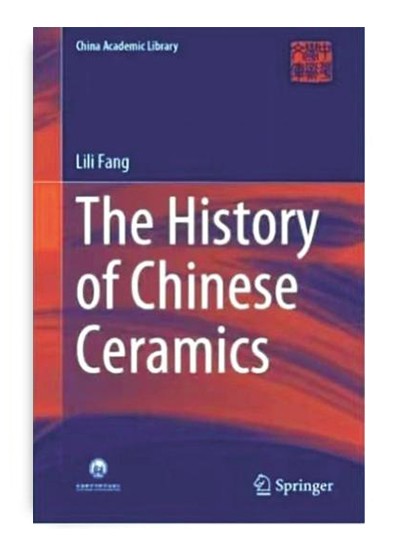Chinese ceramics bridging cultural exchange

The History of Chinese Ceramics
The History of Chinese Ceramics, by Lili Fang, honorary director and a research fellow of the Art Anthropology Research Institute at Chinese National Academy of Arts, is by far the largest and most beautifully printed English version of its kind, arousing enthusiastic responses among readers. Over the past five years, the book has been translated into Spanish, Russian, and English for international readers, becoming the most translated volume on the subject.
Distinguished by its pioneering perspective of globalization and utilization of anthropological methodologies, The History of Chinese Ceramics represents the history of world ceramics, constituting a part of the history of world trade, economy, politics, culture, and art. The author concentrates on its cultural traits from the perspective of technology, symbols, and social organizations, while highlighting the emergence, integration, and cultural interaction of multi-ethnic groups in the historical development of ceramics.
Previous historiographies of ceramics often overlooked the regions inhabited by ethnic groups. Fang’s research investigated Chinese cultural relics housed in collections across the United States and Europe, giving full attention to Liao (907–1125), Jin (1115–1234), Western Xia (1038–1227), and Yuan (1271–1368) ceramics. The book not only explores China’s indigenous ceramic art, but also tracks the spread of ceramics in Asia, Africa, Europe, and the Americas, showcasing the status and influence of Chinese ceramics on a global scale. This work serves as a landmark achievement in the extensive exchanges between Chinese and foreign cultures in the new era, displaying its globalization features.
The book stands as an authoritative masterpiece, providing a comprehensive and in-depth exploration of Chinese ceramic art. Through careful research and firsthand investigations, the author presents the origins, evolution, and development of Chinese ceramics, offering insights into the social, economic, and cultural factors beyond mere aesthetic value.
Fang adeptly delineates the transmission and evolution of porcelain-making techniques and ceramic culture, ranging from the Tang (618–907) tri-color glazed ceramics, the Song (960–1279) celadon, the Yuan blue and white porcelain, the doucai [contrasting colors] porcelain of the Ming Dynasty (1368–1644) and the Qing (1644–1911) famille-rose porcelain. Each period has its unique artistic style and technical innovation. In addition, the author illustrates the spread of Chinese ceramics overseas, identifying the role of ceramics on the ancient Silk Road.
The History of Chinese Ceramics elegantly tells the story of Chinese art, Chinese history, and Chinese culture from its unique perspective. In addition to the foreign language versions mentioned above, the book has secured publishing contracts for Kazakh and Kyrgyz versions, while cooperation agreements for Korean versions are also in process. This underscores its role in fostering cultural exchanges between China and other countries, building a rainbow bridge for international artistic communication.
Liu Qiang is director and a senior editor of the Academic Publishing Center at Shandong Qilu Press.
Edited by YANG LANLAN
